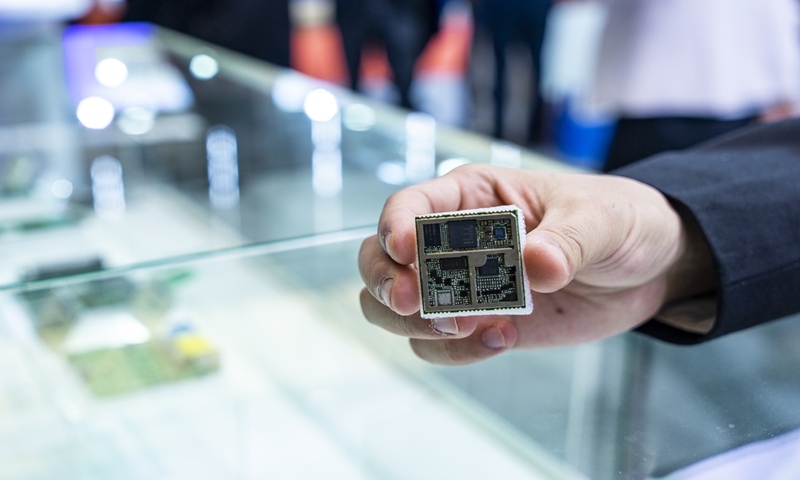A global microchip shortage is plaguing the entire cell phone manufacturing, as well as hitting personal computer making and car production.
The shortage is spurred by COVID-19-induced supply crunch, the fallout from US’ trade war and a fierce arms race, according to mobile phone manufacturers and experts, who also stated that the chip shortfall is likely to last for months.
COVID-19 impact
A growing chorus of mobile phone vendors warned in recent weeks they cannot access enough chips to make their products.
“The chips and other components from Qualcomm are out of stock, including power supply and RF devices,” a person with Chinese smartphone maker Realme said on Monday.
“There’s a shortage of microchips this year. It’s not just shortfall but severe shortage,” Lu Weibing, vice president of Xiaomi Group said on his Weibo account on Feb 24.
Key industrial players like Qualcomm, have noted the shortage. “The shortage in the semiconductor industry is across the board,” said incoming Qualcomm CEO Cristiano Amon in January, CNBC reported.
The delivery time of the whole series of materials for Qualcomm has been extended to more than 30 weeks, and the delivery time of CSR Bluetooth audio chips to 33 weeks, Yicai reported, citing person in the mobile industrial chain.
Jiang Xiaofeng, sales director of Umidigi, a Chinese mobile phone company, told Global Times on Monday that the whole industry is facing challenges including increasing prices of raw materials and even running out of stock.
“Due to the influence of COVID-19, the cost of mobile phone manufacturing industry is rising rapidly,” said Jiang.
Jiang noted that the price of semiconductor chips keeps rising, which affects their manufacturing directly, and the production cost may not go down in a short time.
The lack of chips supply had already started from the end of 2020, and the gap has accumulated gradually, Sun Zhenxiang, head of Shenzhen Yudamei Electronic Ltd, told Global Times on Tuesday.
“The pandemic affected companies’ forecasts for the industry. Many companies believed that the pandemic may adversely impact their production capacity so they prepared less material to produce chips,” said Sun.
It turned out that the needs for electronic devices didn’t go down due to the pandemic. On the contrary, online lectures for students and work at home policies for most companies raised the need for electronic devices and internet services.
“The prices of remote sensing chips and internet servers for online activities had sharp rises,” said Sun.
Hoarding race
In addition to the reduced capacity and delayed work resumption affected by the COVID-19, some chip makers could not resume normal production because of the US sanction measures, such as SMIC, which exacerbated the market shortage, Xiang Ligang, director-general of the Beijing-based Information Consumption Alliance, told the Global Times on Monday.
As a result major smartphone makers have begun hoarding components which helped accelerate the market shortage, Xiang added.
Umidigi, for example, had prepared a batch of smart phone chips in advance, according to Jiang. “We usually pre-stock materials for our manufacturing capacity in advance of three to six months based on our plans,” said Jiang.
He said the current chips for the company can meet the requirement of daily manufacturing capacity and company’s stocked chips can be used until the end of the second quarter of 2021.
Other mobile phone manufacturers including Huawei, Oppo, Vivo are also reported to be increasing component stock.
Experts and insiders predicted that chips are likely to remain in short supply over the coming months as demand remains higher than ever.
According to the Semiconductor Industry Association, global chip sales would grow 8.4 percent in 2021 from 2020′s total of $433 billion, up from 5.1 percent year-on-year.
Filling the gap
Sun predicted that the shortage for low-end storage chips which require less technologyand raw materials such as plastic and cooper can be solved by more investment. “However, the lack of main control chips which need to be imported from oversea, may not be solved easily,” said Sun.
Xiang estimates there will be a short-term price hike up due to uneven supply and demand, but the shortage would be eased by the second half of the year.
“As far as I know chip manufacturers are increasing their production capacity and China’s accelerated speed in the construction of chip foundries is also expected to ease the shortage,” he said.
At present, there are 66,500 chip related enterprises in China, and 22,800 of them were newly registered enterprises in 2020, a year-on-year increase of 195 percent, data from market information online platform Qichacha showed.
Since 2021, the growth has been more rapid, with 4,350 registrations in the first two months, a year-on-year increase of 378 percent.
Xiao Yaqing, Minister of the Ministry of Industry and Information Technology, told a briefing on Monday that China will provide necessary support at the national level to build a market-oriented semiconductor industry.
“We will increase tax cuts for IC enterprises and further enhance the basic foundation of the industry including raw materials, technology and equipment,” Xiao said.
An employee showcases a semiconductor integrated circuit at an industry expo. Photo: VCG




